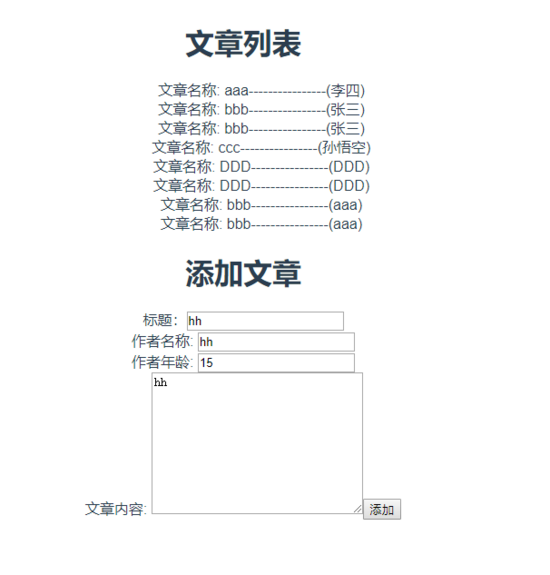vue中使用GraphQL的实例代码
1. 初始化vue项目
npm install -g @vue/cli
vue create vue-apollo-demo
选择默认cli的默认模板就可以了
添加 /src/graphql/article.js 、 /src/utils/graphql.js 两个文件。
├── node_modu...
1. 初始化vue项目
npm install -g @vue/cli vue create vue-apollo-demo
选择默认cli的默认模板就可以了
添加 /src/graphql/article.js 、 /src/utils/graphql.js 两个文件。
├── node_modules └── public │ ├── favicon.ico │ └── index.html ├── src │ ├── assets │ │ └── home.js │ ├── components │ │ └── HelloWorld.js │ ├── graphql │ │ ├── article.js │ ├── utils │ │ ├── graphql.js │ ├── App.vue │ └── main.js ├── package.json └── package-lock.json
2. 安装Apollo客户端
vue-apollo 可以帮助你在应用中使用GraphQL的一套工具。
你可以使用Apollo Boost或 直接使用 Apollo Client(需要更多配置工作)。
name这里用 Apollo Boost 就可以了,如果你想要更细粒度的控制,可以去看 Vue Apollo 的文档。
Apollo Boost 是一种零配置开始使用 Apollo Client 的方式。它包含一些实用的默认值,例如我们推荐的 InMemoryCache 和 HttpLink ,它非常适合用于快速启动开发。
将它与 vue-apollo 和 graphql 一起安装:
npm install --save vue-apollo graphql apollo-boost
3. 创建ApolloClient实例
在你的应用中创建一个 ApolloClient 实例:
/src/utils/graphql.js
import ApolloClient from 'apollo-boost';
const apolloClient = new ApolloClient({
// 你需要在这里使用绝对路径
uri: 'http://127.0.0.1:7001/graphql'
})
export default apolloClient;4. 添加GraphQL的操作实例
/src/utils/article.js
import gql from 'graphql-tag'
import apolloClient from '../utils/graphql'
export function getArticleList(params) {
return apolloClient.query({
query: gql`query ($first: ID) {
articleList(first: $first){
id
title
content
author {
name
age
}
}
}`,
variables: params
})
}
export function createArticle(params) {
return apolloClient.mutate({
mutation: gql`mutation ($title: String, $content: String, $author: AddAuthor) {
addArticle(title: $title, content: $content, author: $author){
id
title
content
author {
age
name
}
}
}`,
variables: params
})
}5. 调试
/src/App.vue
<template>
<div id="app">
<div class="list">
<h1>文章列表</h1>
<ul>
<li v-for="(v, k) of list" :key="k">
文章名称: {{ v.title }}----------------({{ v.author.name }})
</li>
</ul>
</div>
<div class="form">
<h1>添加文章</h1>
标题:<input v-model="formData.title" type="text"><br>
作者名称: <input v-model="formData.author.name" type="text"><br>
作者年龄: <input v-model.number="formData.author.age" type="text"><br>
文章内容: <textarea v-model="formData.content" name="" id="" cols="30" rows="10"></textarea>
<button @click="createArticle">添加</button>
</div>
</div>
</template>
<script>
import { getArticleList, createArticle } from './graphql/article'
export default {
name: 'app',
data() {
return {
list: [],
formData: {
title: '',
content: '',
author: {
name: '',
age: ''
}
}
}
},
mounted() {
this.initData()
},
methods: {
initData() {
getArticleList({first: 0})
.then(res=>{
console.log('request success')
console.log(res.data.articleList.length)
this.list = res.data.articleList
})
.catch(err=>{
console.log(err)
})
},
createArticle() {
createArticle(this.formData)
.then(()=>{
this.initData()
})
.catch(err=>{
console.log(err)
})
}
}
}
</script>效果如下:

总结
以上所述是小编给大家介绍的vue中使用GraphQL的实例代码,希望对大家有所帮助
- 发表于 2020-07-23 22:54
- 阅读 ( 630 )
- 分类:web前端开发
你可能感兴趣的文章
相关问题
0 条评论
请先 登录 后评论
